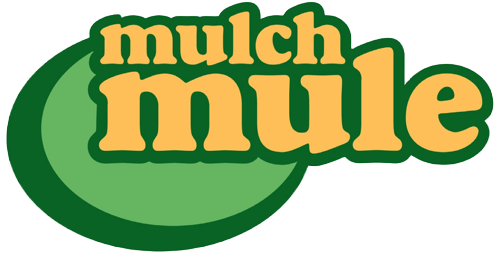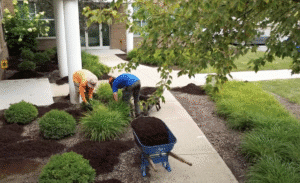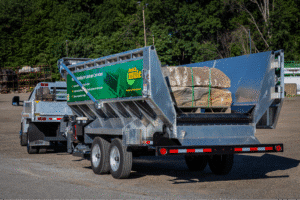Spring is a pivotal time for landscaping businesses, with surging demand for mulching, planting, and other site upgrades. How you handle mulch can profoundly impact turnaround times, labor costs, and overall profitability. Traditional methods such as shoveling and wheelbarrows may suffice for smaller tasks, but they become time-consuming and strenuous when dealing with larger residential or commercial projects. Fortunately, modern equipment designed for efficient landscaping solutions can help reduce labor intensity, improve safety, and scale your operations to meet spring’s hectic schedule.
In this article, we explore the most effective methods for moving mulch in spring—and beyond. We will examine common challenges landscapers face, highlight equipment-based strategies for speeding up mulch distribution, and spotlight how advanced equipment like the Mulch Mule can potentially transform project efficiency, worker safety, and profitability.
By integrating forward-thinking approaches and the right tools, you can ensure your spring season runs smoothly and positions your business for growth throughout the year.
Achieving Efficient Mulch Management in Spring
Mulch plays a critical role in landscaping: it helps maintain soil moisture, suppresses weed growth, and adds a polished look to garden beds, pathways, and other landscaped areas. However, the high volume of spring projects often places intense pressure on your workforce. Tight deadlines can strain manual operations, forcing employees to work longer hours and risk fatigue or injury if you rely solely on traditional labor-intensive techniques.
Employing modern landscaping equipment can relieve these pressures. By automating tasks like loading and unloading mulch and offering precise material placement, innovative solutions let your team focus on higher-level responsibilities—such as quality control, planting, and customer service. As the landscaping season ramps up, it becomes increasingly important to find ways to optimize efficiency, reduce the chance of injury, and keep projects on schedule. The Mulch Mule, for instance, offers features intended to streamline these tasks and allow you to complete work far more quickly than when relying solely on manual methods.
Key Challenges in Moving Mulch During Spring
Spring’s tight timelines and increased project volume present several obstacles:
High Workloads and Tight Deadlines
Clients want vibrant, finished landscapes as quickly as possible. Mulch is typically a key component, yet even distributing a few cubic yards can be laborious when multiplied across several sites. Falling behind on one task can delay others—turning your busy season into a logistical bottleneck.
Labor-Intensive Traditional Methods
Manually shoveling mulch and wheeling it to beds may work on small sites but becomes physically demanding and time-consuming for larger projects. The repetitive lifting involved can slow productivity and contribute to worker fatigue, often necessitating the hiring of temporary labor, which further affects profit margins.
Worker Safety Concerns
Spring is a season when hazards increase. Frequent injuries such as back strain and repetitive motion injuries are common when workers use manual tools over long periods. Prioritizing a safer work environment is essential, since frequent injuries can lead to lost work hours, compensation claims, and lower overall morale.
Balancing Costs and Efficiency
While traditional methods might appear cost-effective initially due to low equipment costs, the cumulative expenses stemming from labor hours, injuries, and operational delays can add up. Investing in modern equipment is often more beneficial when overall operational efficiency and cost savings are considered.
4 Efficient Methods for Moving Mulch in Spring
Modernizing your approach to mulch management can help you overcome these seasonal obstacles:
1. Leverage Modern Mulch-Handling Equipment
Dedicated mulch trailers and automated systems are designed to lessen the physical strain and reduce labor hours required for loading and unloading large volumes of material. These machines, engineered for performance and ease of use, can efficiently transport high volumes of mulch—significantly reducing the delays typical of manual labor.
2. Replace Manual Labor with Automated Processes
Modern equipment incorporates automated features like a live floor system that moves mulch with the push of a button. This shift from shoveling to automated loading drastically cuts down on manual handling, boosting productivity while also reducing the risks associated with repetitive physical tasks.
3. Ensure Consistency in Application
Uniform mulch layering is important for maintaining water retention, suppressing weeds, and achieving a professional appearance. Automation allows for more consistent distribution of mulch with minimal guesswork, as systems controlled via remotes can precisely manage the flow and volume of material deployed.
4. Evaluate Long-Term Cost-Effectiveness
Although modern equipment requires an initial investment, the long-term benefits include labor savings, reduced injury rates, and the capacity to handle more projects simultaneously. Over time, these efficiencies contribute to a favorable return on investment and enhanced profitability.
Optimizing Workflow: Practical Tips for Landscape Professionals
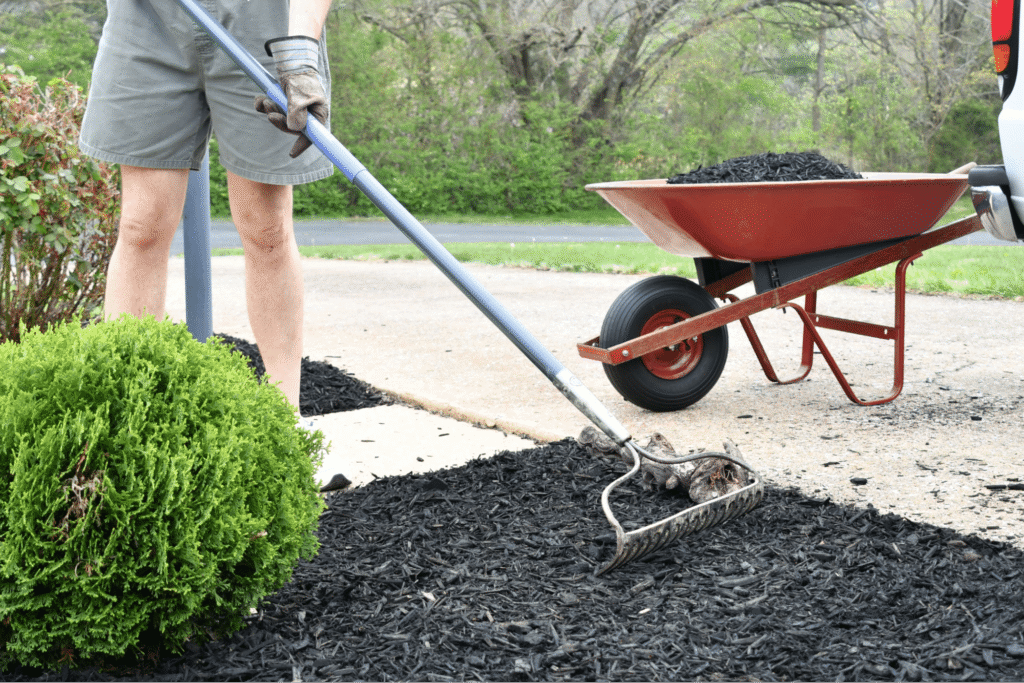
Leveraging advanced equipment goes hand in hand with effective management practices. Consider these strategies to maximize your equipment’s benefits:
Equipment Selection
Analyze your typical project scales, and select equipment that matches your requirements. For large commercial projects, prioritize capacity and speed, while for smaller or varied tasks, prioritize versatility and mobility.
Routine Maintenance and Inspections
Regular equipment maintenance ensures reliability, minimizes downtime, and extends the lifespan of your machinery. Quick access to parts and service can keep your operations running smoothly.
Skilled Operator Training
Invest in worker training for safe and efficient equipment operation. Hands-on training sessions help operators understand the nuances of systems like the live floor and remote-controlled discharge, maximizing efficiency and reducing error rates.
Use of Attachments and Upgrades
Enhance the versatility of your machinery with optional attachments such as vacuum debris loaders. This transforms your equipment into a multi-season tool, adapting to various operational demands.
Effective Team Planning
A well-coordinated team is essential. Assign roles that complement each other, ensuring that while some workers manage equipment, others prepare sites or handle finishing tasks. A coordinated approach prevents bottlenecks and maintains project flow.
Introducing the Mulch Mule: Making Mulch Management Faster and Safer
One of the specialized tools in modern landscaping equipment is the Mulch Mule. Designed with safety, efficiency, and year-round utility in mind, the Mulch Mule is engineered to handle not just mulch but also soil, leaves, debris, and even aggregates like stone.
Core Features of the Mulch Mule
- 15-Cubic-Yard Aluminum Hopper – Its expansive capacity minimizes the number of reload trips, an essential feature during peak landscaping seasons.
- Live Floor System with Quick Discharge – This robust system can move material rapidly—a technology that replaces lengthy manual shoveling with a much faster automated process. While specific time savings depend on each project, automation in loading and unloading consistently reduces the overall time needed compared to manual methods.
- Forward and Reverse Operation – This function of the live floor enhances its versatility as a utility trailer. This continuous, reversible floor allows for easy loading and offloading of various materials, including palletized goods, plants, shrubs, and bulk items out the rear.
- Handheld Remote Control – With the ease of remote operation, you can adjust conveyor speed, direction, and discharge volume, enhancing both precision and efficiency.
- Optional Vacuum Debris Loader – The integrated vacuum loader attachment enables the Mulch Mule to double as a leaf and debris collector during fall cleanup, further demonstrating its versatility across multiple seasons.
Watch the video below to learn how Mulch Mule can take the load off your employees and pay for itself in the long run by increasing overall profits for your business over time.
Year-Round Applications
A well-rounded, year-round strategy can safeguard your business from seasonal slowdowns and enhances your competitive position. While mulch distribution is crucial in spring, the Mulch Mule’s capabilities extend throughout the year:
- Fall: Convert the trailer into a leaf and debris collection system; the Billy Goat vacuum streamlines the leaf cleanup process during peak season.
- Winter: You can also use the Billy Goat vacuum attachment for debris loading during the winter months.
- Summer: Employ the equipment for tasks like soil and fertilizer transport, enabling continuous use even during high-temperature periods.
In addition to the above seasonal uses, the reversible and continuous live floor allows you to move palletized material which is a year round task.
Programs to Support Your Investment
Understanding that budgeting is crucial, the Mulch Mule program offers flexible solutions to ease your investment:
- Financing Options: Flexible financing plans can ease the initial investment burden, making advanced equipment more accessible.
- Ambassador Program: Before committing, preview the equipment in action through a live demonstration program, helping you gauge its potential impact on your operations.
5 Key Benefits of Investing in the Mulch Mule
When it comes to investing in modern equipment, the initial cost may seem daunting, but the long-term benefits can greatly outweigh these expenses. By reducing labor costs and overtime, businesses can considerably enhance their bottom line. Additionally, the use of advanced machinery can lower the risk of work-related injuries, creating a safer work environment and decreasing potential compensation claims. As project capacity and scalability increase, so does the operational efficiency, leading to improved customer satisfaction. Over time, completing more projects in less time contributes to a better industry reputation, potentially opening up new opportunities for further expansion and success.
Investing in the Mulch Mule offers several advantages for your landscaping operations:
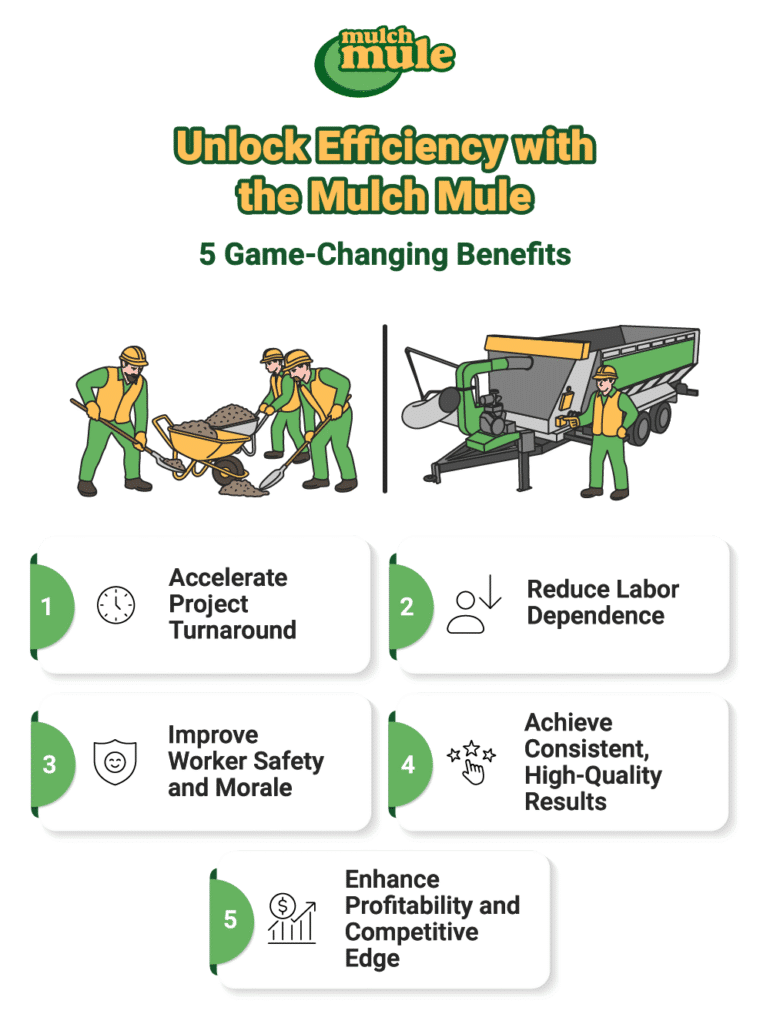
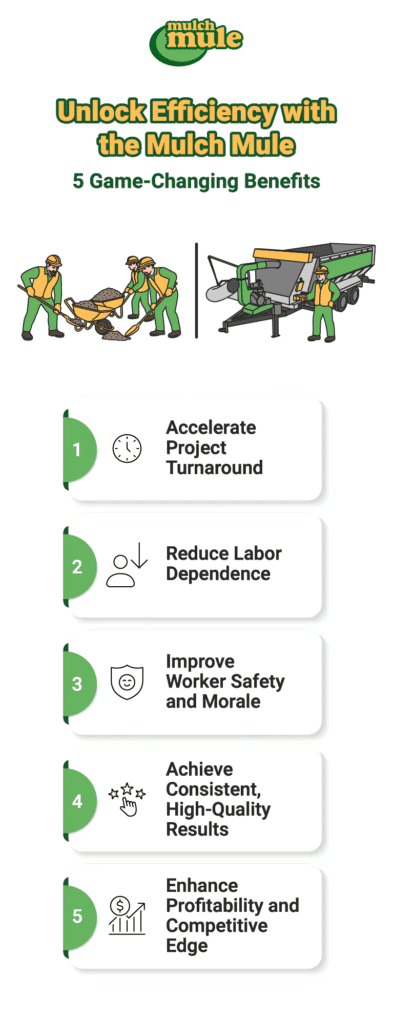
1. Accelerate Project Turnaround
Automated systems can significantly reduce the time required for loading and unloading mulch compared to manual labor. While exact time savings may vary depending on project specifics, such automation has been noted to allow crews to accomplish tasks much faster than with exclusively manual methods.
2. Reduce Labor Dependence
By delegating heavy lifting to mechanized systems, you reduce the necessity for large crews. This allows staff to focus on higher-level tasks such as planning and quality control, ultimately helping to improve the overall work environment and service quality.
3. Improve Worker Safety and Morale
Automating strenuous tasks minimizes the risk of physical injuries such as back strains and repetitive motion disorders. This not only boosts workers’ health and safety but also enhances morale by reducing the burden of physically demanding work.
4. Achieve Consistent, High-Quality Results
Controlled, automated discharge ensures a uniform layout of mulch across garden beds and projects. A consistent finish not only improves aesthetics but also minimizes the need for corrective measures later on.
5. Enhance Profitability and Competitive Edge
By streamlining operations and reducing manual labor costs, the Mulch Mule can help you take on more projects while maintaining, or even increasing, profit margins. This improved efficiency gives your business a competitive advantage in a bustling industry.
Long-Term Impact on Workforce and Business Productivity
Modern landscaping equipment can substantially alter workforce dynamics by fostering skill development. With the introduction of new machinery, operators have the opportunity to acquire valuable technical skills, enhancing both their safety and the overall operational efficiency of the business. Improved labor allocation is another benefit, as reduced time on physically demanding tasks allows staff to focus on customer engagement, thereby enhancing the quality of service. Furthermore, the adoption of these advanced tools leads to enhanced employee retention by improving safety and lessening the physical strain of landscaping work, thereby increasing job satisfaction and reducing turnover rates. Ultimately, these advancements support scalability and growth by enabling you to accept more contracts without overtaxing your existing team, promoting sustainable business expansion.
Future Trends in Landscaping Equipment
As technology progresses, landscaping equipment continues to innovate:
- Smart Technology Integration: Future tools may feature real-time performance data and GPS-based automation, making remote support and monitoring a standard feature.
- Eco-Friendly Powertrains: Battery-powered and cleaner, fuel-efficient systems will become more common as environmental regulations tighten.
- Increased Automation and AI: Robotic mowers and self-driving utility vehicles will likely streamline tasks even further.
- Multi-Functional Machines: Future designs will aim to offer multiple functions in one system, ensuring minimal downtime between tasks.
Staying abreast of these trends will help ensure your business remains at the forefront of efficiency and effectiveness.
Future-Proof Your Landscaping Business with Advanced Equipment
Spring is a prime opportunity to grow your landscaping business, yet it also challenges you with labor-intensive tasks such as mulch distribution. By embracing efficient, automated methods of moving mulch—particularly through the use of specialized equipment like the Mulch Mule—you can significantly streamline labor, enhance safety, and improve overall productivity. Although exact time savings from automation will vary depending on specific project conditions, the enhanced efficiency generally allows crews to complete tasks far more quickly than purely manual methods.
Ready to drive your landscaping productivity into a new era? Consider these next steps:
- Read customer testimonials and success stories to gauge real-world impacts.
- Schedule a demonstration to see the equipment in action and evaluate its fit for your unique needs.
- Contact the Mulch Mule team for more information on how this innovative solution can transform your operational workflow.
With the right investment in advanced landscaping equipment, your business can flourish across seasons—adapting seamlessly to meet the challenges of each new project while driving long-term profitability and success.
